Yogyakarta temples for a cultural adventure
Bali isn’t the only place with beautiful temples – Yogyakarta is also home to a number of temples, or candi, which have existed long before Indonesia even got its name. Visiting cultural heritage sites can help us take a break from our fast-paced world by letting us reflect and reconnect with the past.
Here’s a list of 8 Yogyakarta temples you can visit for an unforgettable cultural experience.
1. Gebang Temple – a lesser-known structure from the 8th century
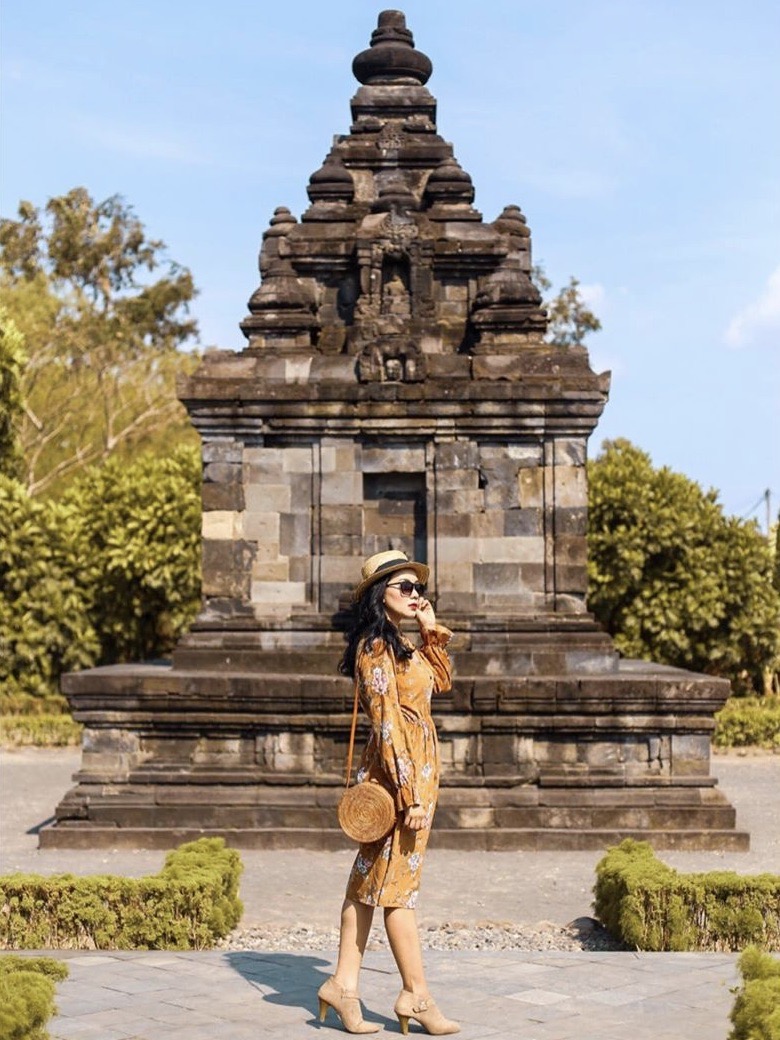
Image adapted from: @sariaix
Gebang Temple is a small 8th-century Hindu temple that’s perfect for visitors who prefer to travel off the beaten path. It was excavated in 1836, following the accidental discovery of a Ganesha arch at the same location. Unlike other temples, and possibly due to its small size, this one has no relief panels.
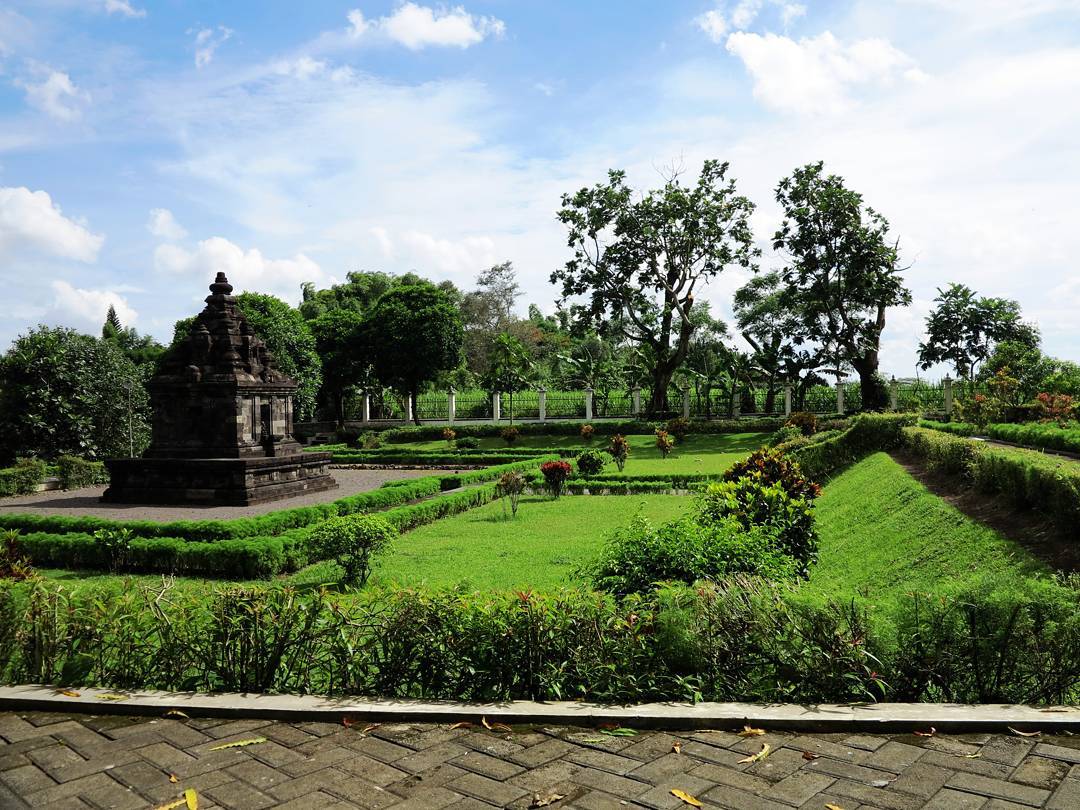
Image credit: @dhaneeeeee
Primarily known among Yogyakartans, Gebang Temple is not what you’d call a touristy spot. It’s a hidden gem that’s quite difficult to find without the help of locals. But once you get there, its obscurity could make the cultural experience feel special and rewarding.
Opening hours: 8AM–5PM
Price: Rp. 5,000 (~USD0.35) for local and international visitors
Address: Gebang Hamlet, Wedomartani, Ngemplak, Sleman, Special Region of Yogyakarta 55584
How to get there: 33-minute drive from downtown Yogyakarta
2. Sambisari Temple – once buried in Mount Merapi’s ash
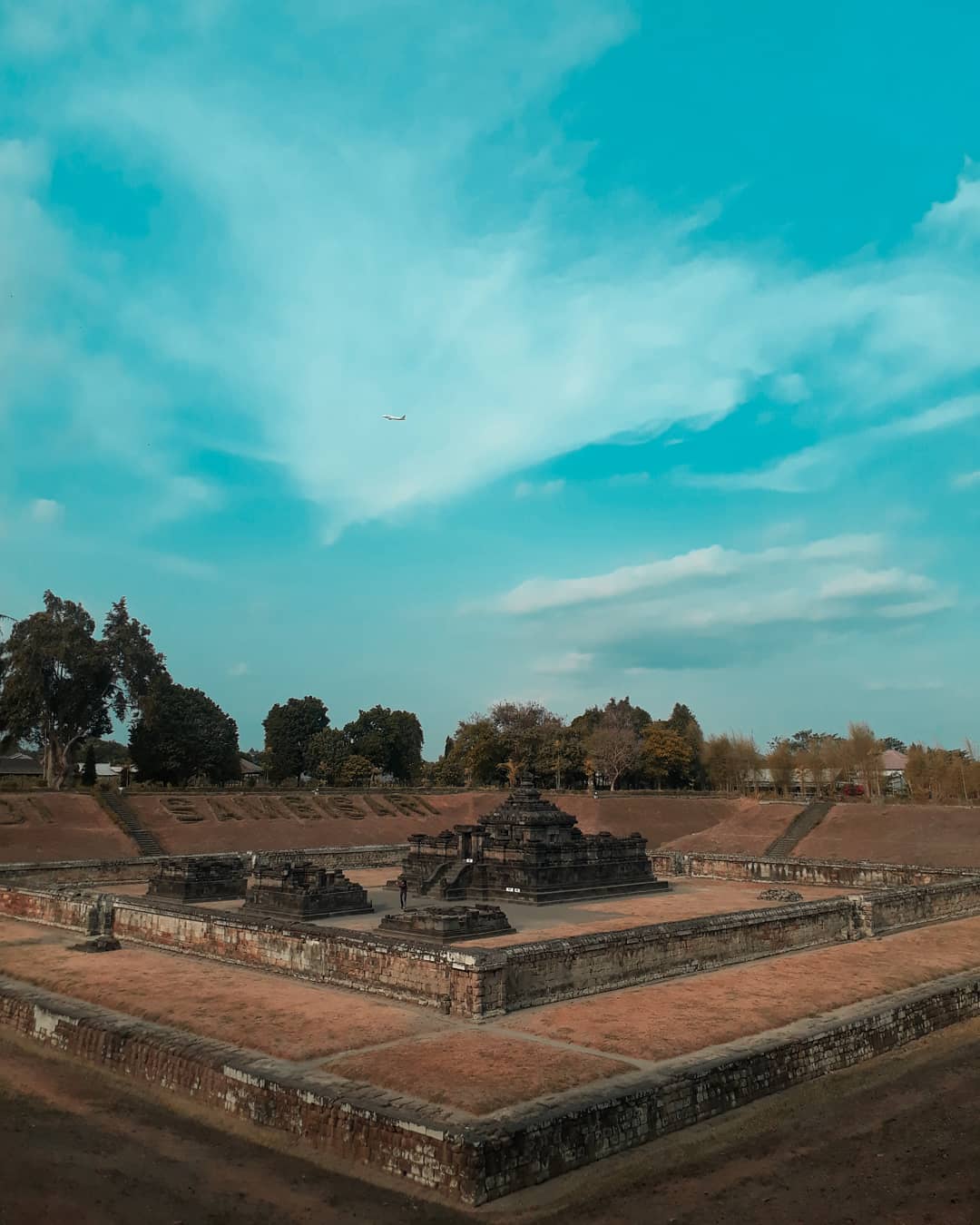
Image credit: @ezharzar
Located 15 km from downtown Yogyakarta, Sambisari Temple is another site you’d want to visit. The story behind the discovery of this 9th-century Hindu temple is interesting as it shows how unexpected things tend to lead to archeological findings. After the eruption of Mount Merapi in 1906, Sambisari Temple was buried in volcanic ash until a farmer found its ruins 60 years later.
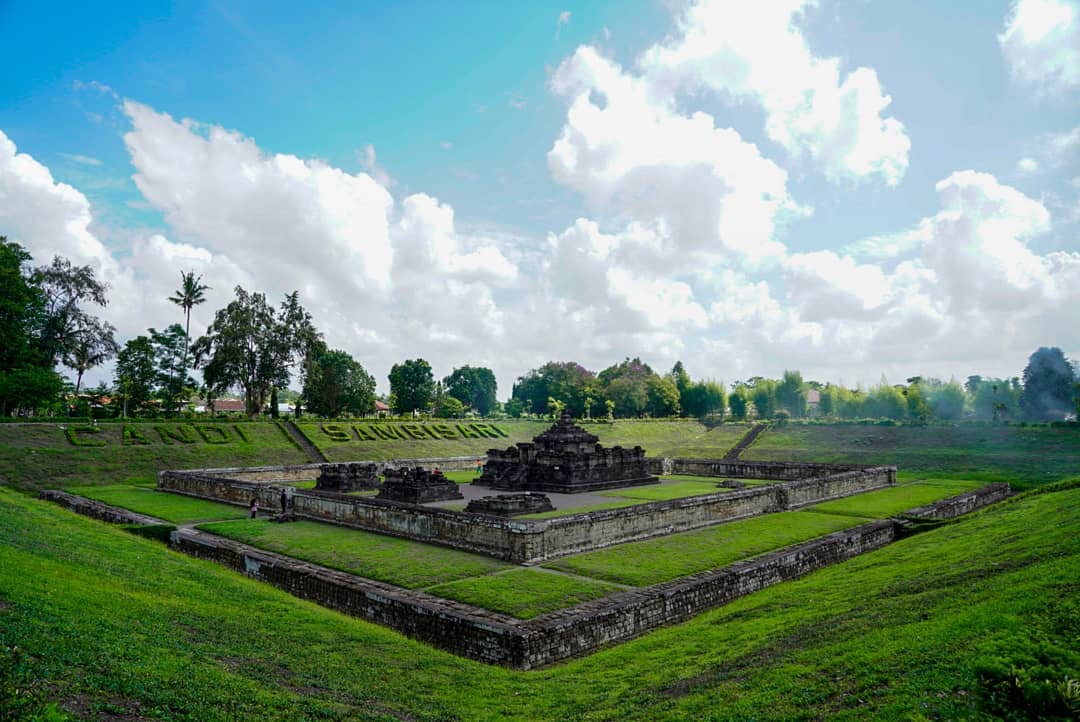
Image credit: @uhaisnaini
The layout of Sambisari Temple is slightly different from the more well-known temples as it lies 6.5 meters below ground level. Its open layout also means that it can get quite hot during the day, so it’s best to visit in the morning or later in the afternoon.
Opening hours: 7AM–5PM
Price: Rp. 5,000 (~USD0.35) for local and international visitors
Address: Jalan Candi Sambisari, Purwomartani, Kalasan, Sleman, Special Region of Yogyakarta 55571
How to get there: 30-minute drive from Yogyakarta
3. Ijo Temple – get a magnificent view of the entire city
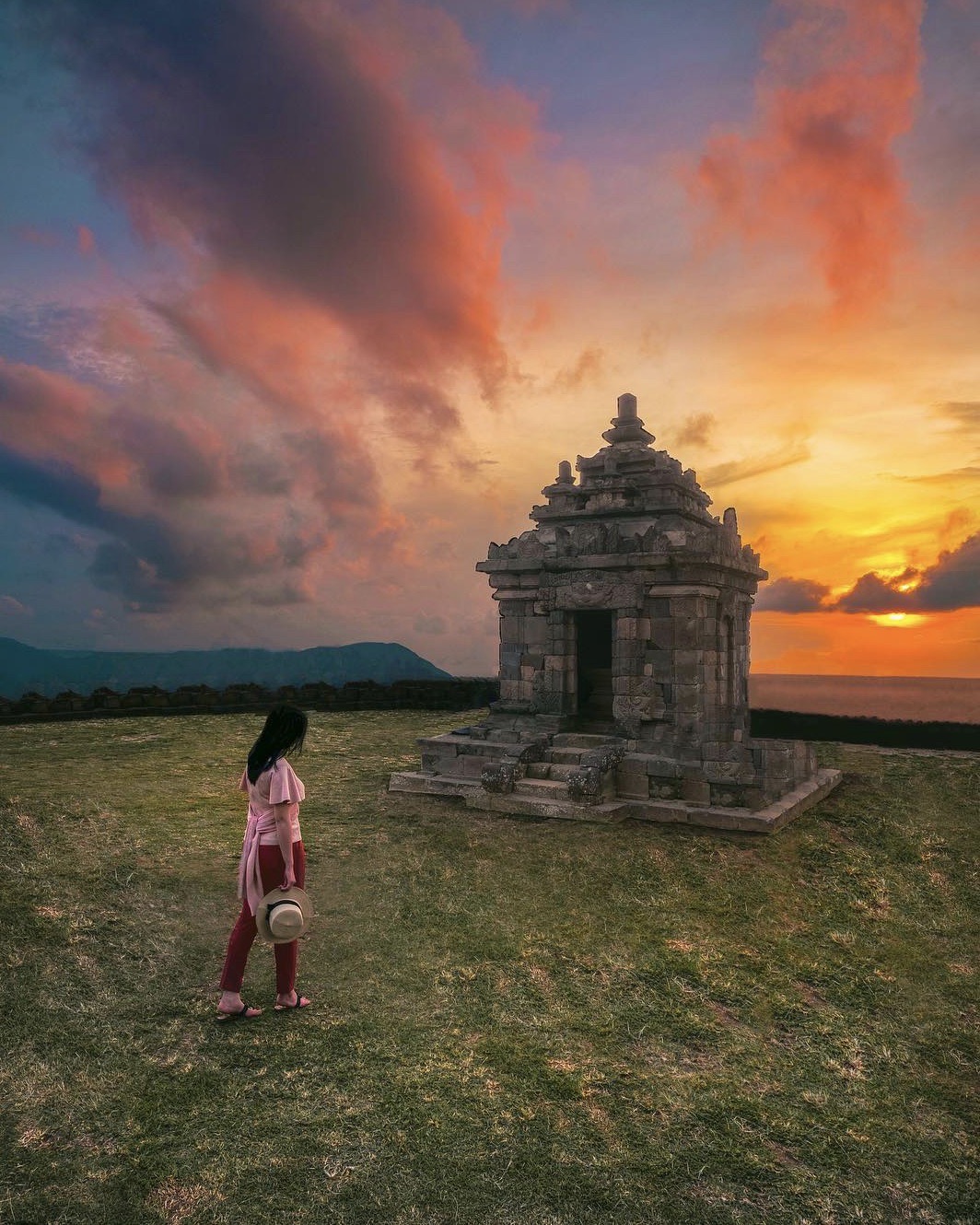
Image adapted from: @ngeliasalim
Built sometime in the 10th or 11th century, this small Hindu temple compound is highly recommended for those who want the perfect holiday photo as it’s located on a hill. You can see the entire city and if you come at the right time, you can also enjoy the sunset view.
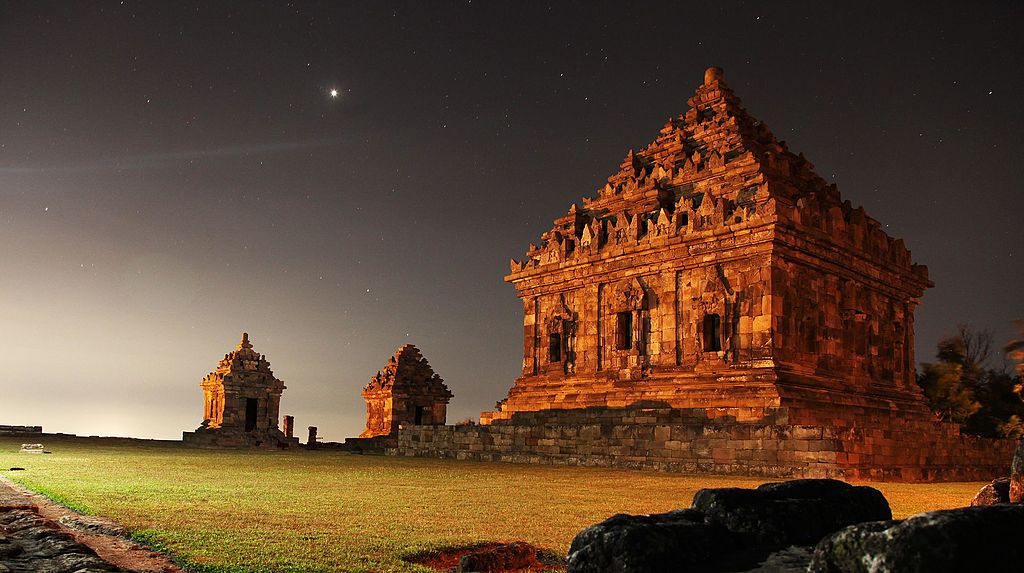
Image credit: GusJuned/Wikimedia Commons
Ijo Temple is located near other tourist destinations such as Prambanan, Barong, and the famous Ratu Boko Palace, so you can temple-hop conveniently.
Lastly, it’d be a good idea to keep in mind that it’s not uncommon for tourist spots to charge local and international visitors differently. While this isn’t ideal, Ijo Temple is one of them, so be sure to have your ID ready.
Opening Hours: 8AM–5PM
Price: Rp. 5,000 (~USD0.35) for local visitors and Rp. 10,000 (~USD0.71) for international visitors
Address: Kikis, Sambirejo, Prambanan, Sleman, Special Region of Yogyakarta 55572
How to get there: 50-minute drive from Yogyakarta
4. Prambanan Temple – a temple with a unique backstory
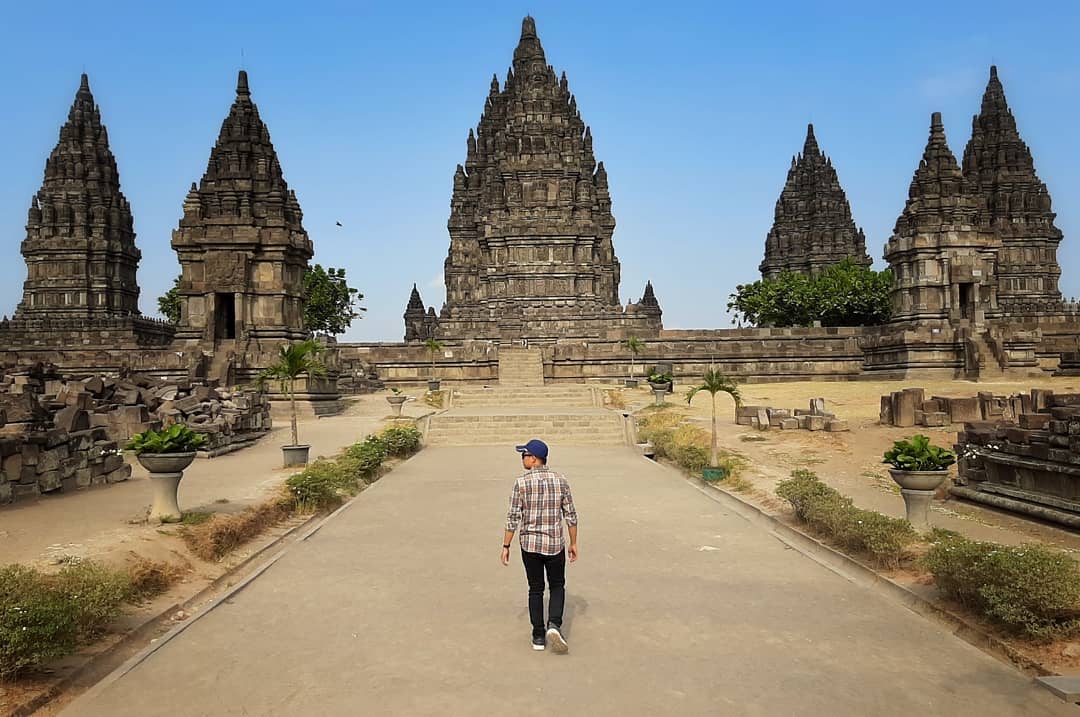
Image credit: @hendri05
A UNESCO Cultural Heritage Site that is among the most popular destinations in Indonesia, the Prambanan Temple compound is the largest Hindu temple complex in the country. Constructed in the 9th century, the 240-temple compound includes three main temples dedicated to Trimurti Lords Shiva, Brahma, and Vishnu.
Some locals believe that if you go to Prambanan with your partner, you will eventually split up. The origin of this superstition is unclear, but legend has it that Princess Roro Jonggrang, who was unable to reciprocate the Prince Bandung Bondowoso’s love, told him to build 1000 temples by the time the cock crowed.
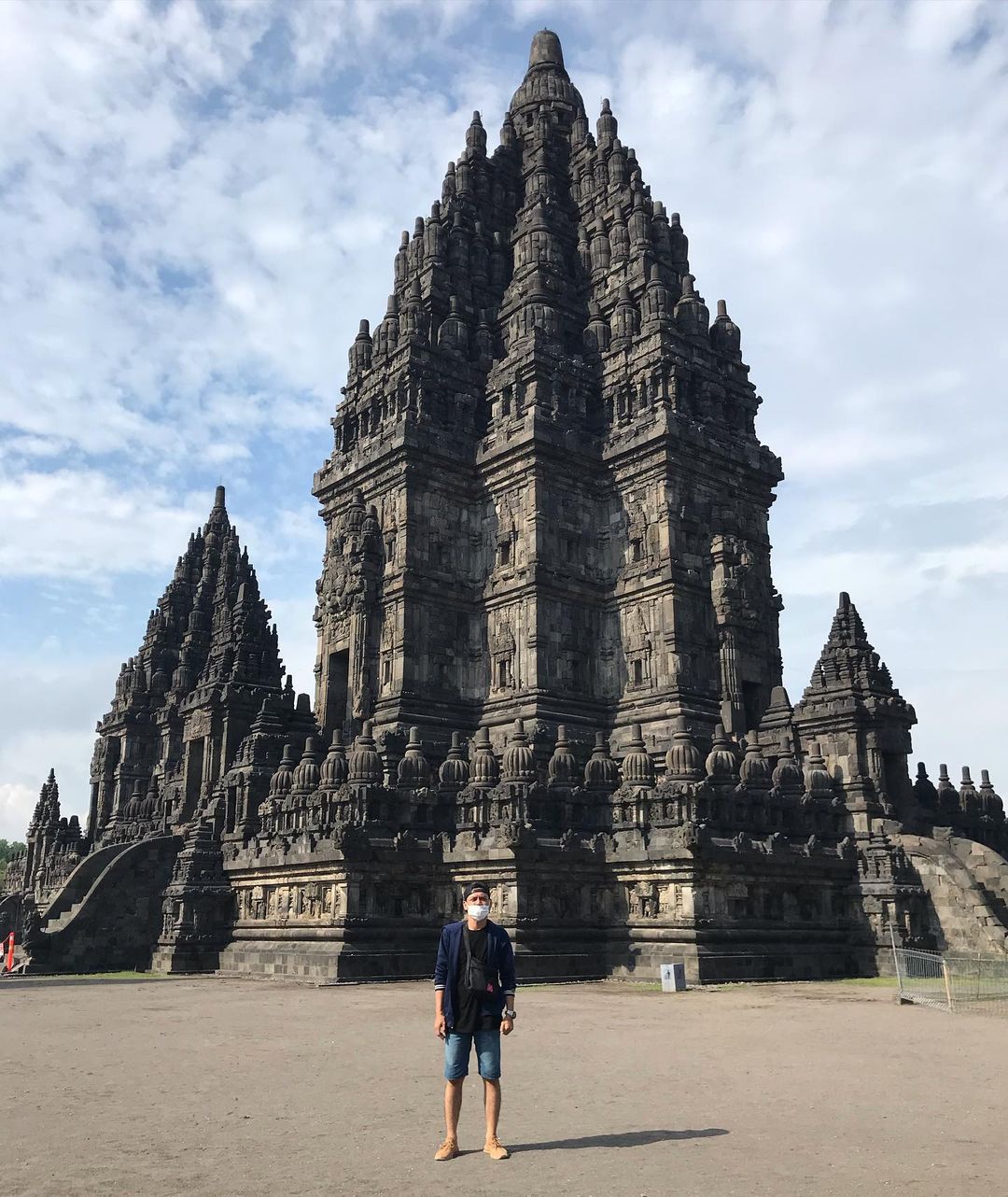
Image credit: @kamalulail
After the prince managed to make his 999th temple, the princess tricked him into thinking it was already dawn. Realizing that he had been lied to, he cursed her and she turned into the 1000th temple.
Legends aside, the Prambanan compound is definitely worth a visit if you’re ever in Yogyakarta. While history buffs might benefit from hiring a guide, the compound itself is worth exploring on your own – especially if you’re an avid shutterbug. Additionally, you can sit around the main temple area and enjoy an outdoor lunch.
Opening Hours: 6AM–5PM
Price: Rp. 50,000 (~USD3.55) for local visitors and USD25 for international visitors
Address: Jalan Raya Solo–Yogyakarta #16, Kranggan, Bokoharjo, Prambanan, Sleman, Special Region of Yogyakarta 55571
How to get there: 35-minute drive from Yogyakarta
5. Sewu Temple – a quiet Buddhist temple near Prambanan
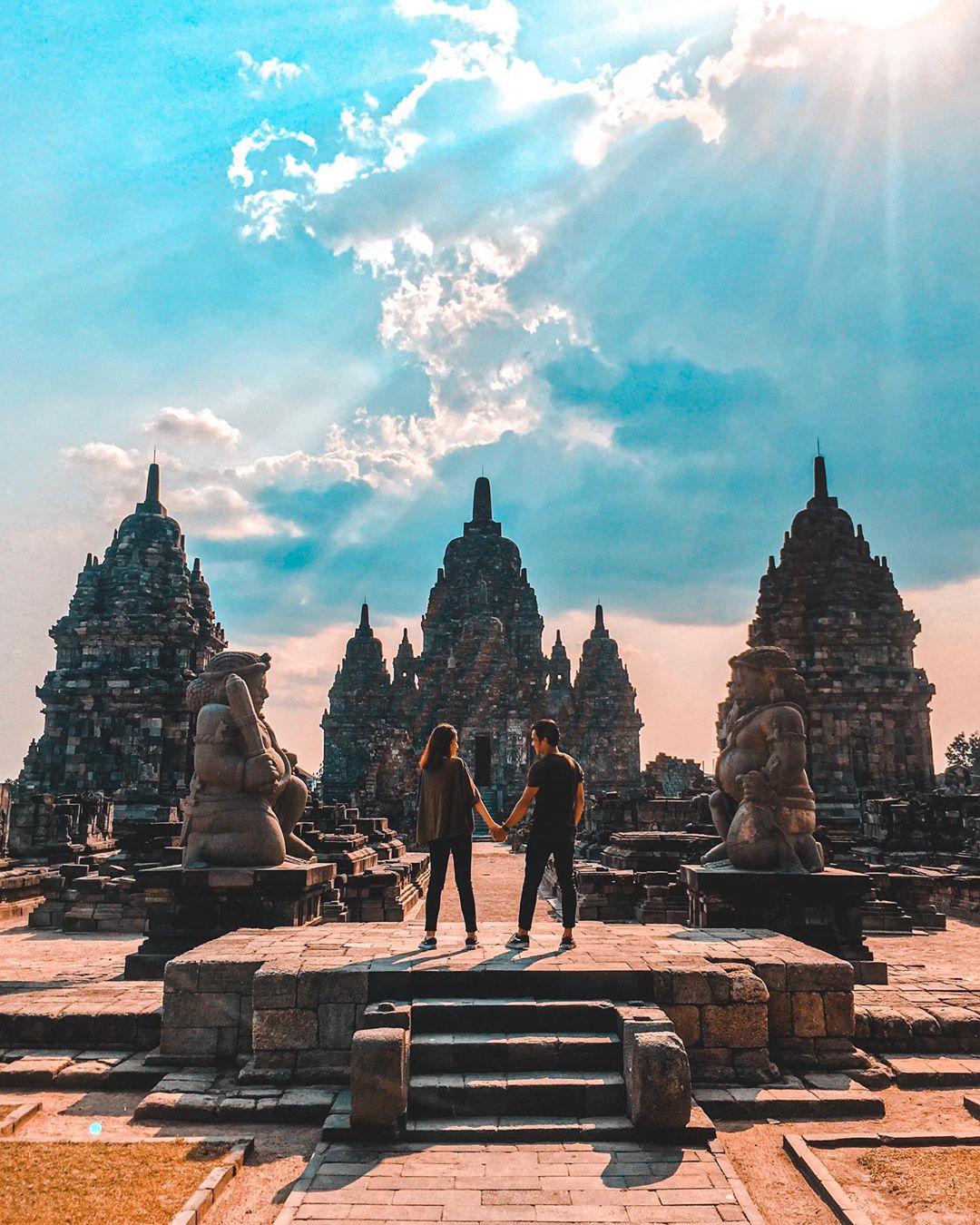
Image credit: @putrypangestyka
Sewu Temple is the second largest Buddhist temple compound in Indonesia, and a mere 10-minute walk from Pramamban. Sewu is the Javanese word for “a thousand,” which does not refer to the number of individual temples found in the compound as there are only 249. It is believed the name was taken from the legend of Roro Jonggrang.
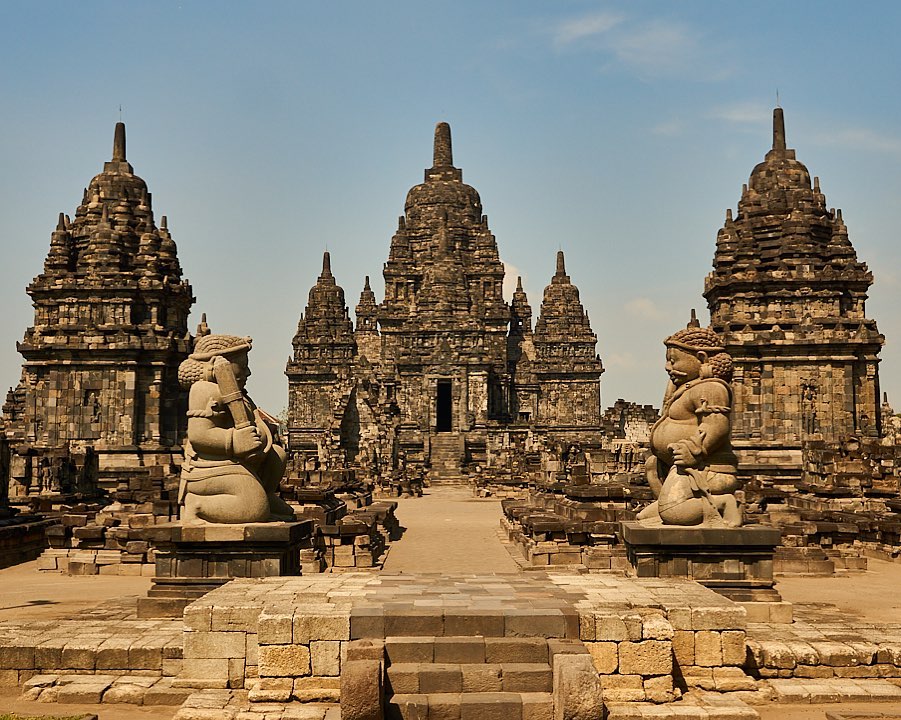
Image credit: @eko.wibowo87
There is a small audio-visual center within the compound where you can go to learn about the history of Sewu Temple.
Apart from exploring the individual temples and taking pictures, you can also go around the complex by bike that costs around Rp. 20,000 (~USD1.42) to rent.
Opening Hours: 6AM–5PM
Price: Prambanan pass includes Sewu
Address: Jalan Raya Solo–Yogyakarta 16, Kranggan, Bokoharjo, Prambanan, Sleman, Special Region of Yogyakarta 55571
How to get there: 35-minute drive from Yogyakarta
6. Barong Temple – a Hindu temple with stepped terraces
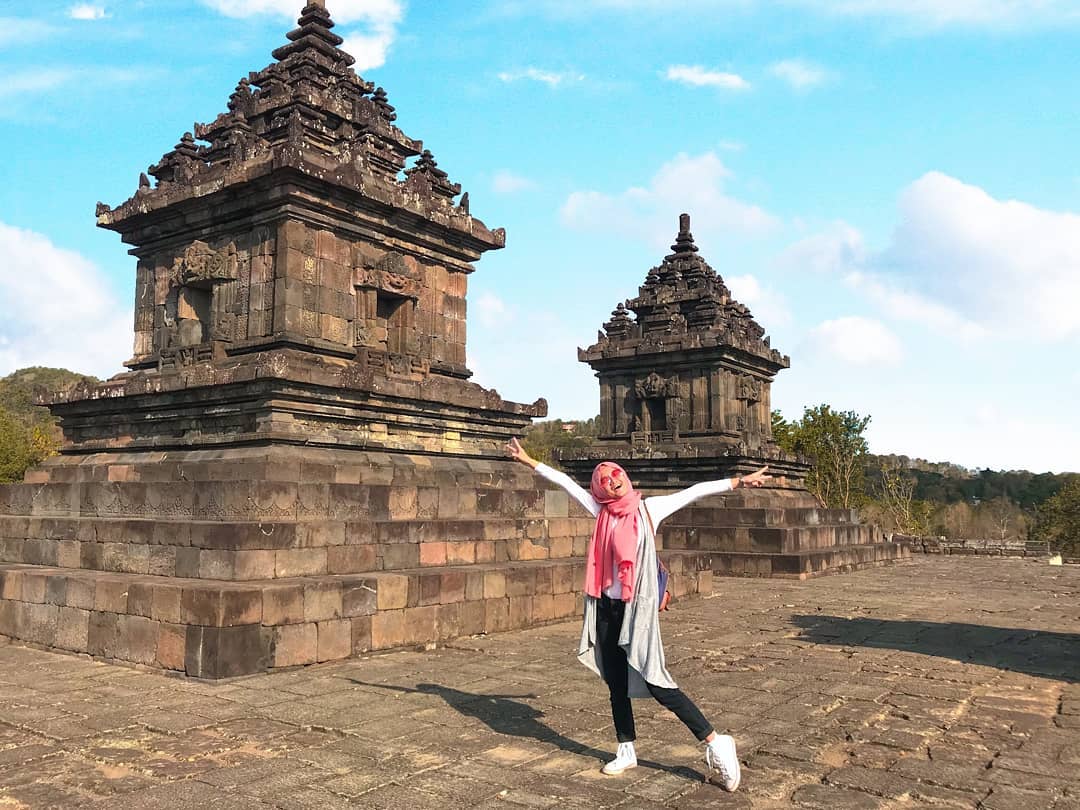
Image credit: @jihanchonsa_
Barong Temple is a Hindu heritage site that is architecturally unique compared to most Javanese temples. Though built in the 9th century, its use of stepped terraces, or punden serundhak, is stylistically pre-Hindu.
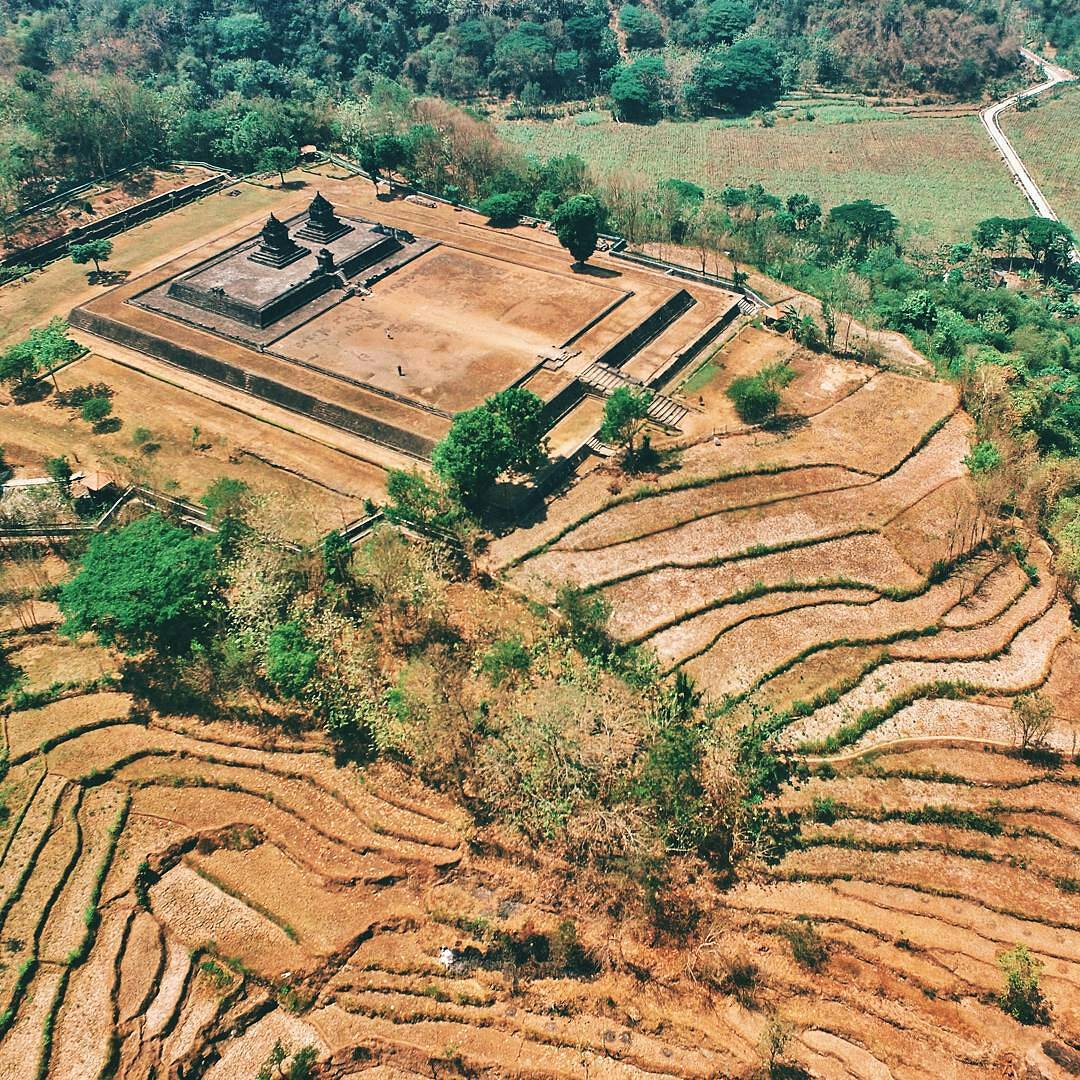
Image credit: @jogjaku
The temple’s name originated from prominent ornaments of the deity Kala, who resembles a Javanese and Balinese mythological creature called Barong.
Don’t waste a single photo opportunity because apart from being nice to look at, the unique structure also serves as a great vantage point. Like at Ijo Temple, you can admire the sunset at Barong Temple.
Opening hours: 6AM–5PM
Price: Rp. 5,000 (~USD0.35) for local visitors and Rp. 10,000 (~USD0.71) for international visitors
Address: Candisari Hamlet, Dowang Sari, Sambirejo, Prambanan, Sleman, Special Region of Yogyakarta 55572
How to get there: 45-minute drive from Yogyakarta
7. Sari Temple – an 8th-century temple that may have been a monastery in the past
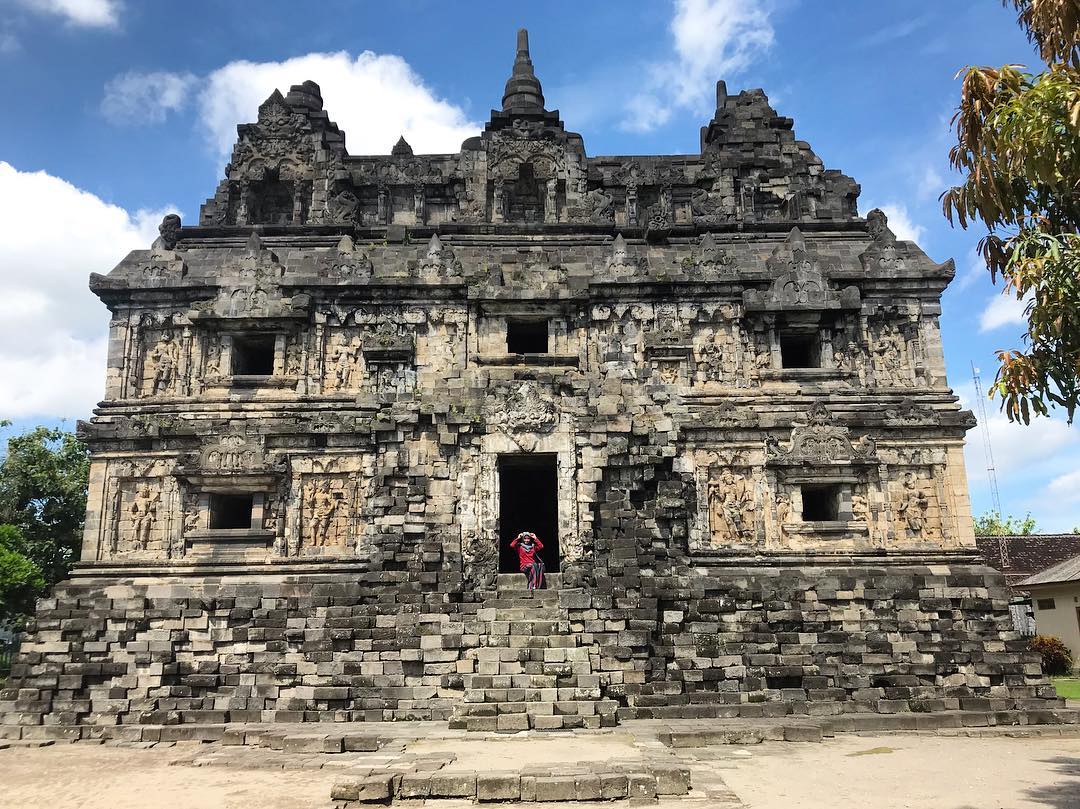
Image credit: @krtqsr
If you have an affinity for sculptures and ornamental features, Sari Temple would be a good choice. The relief panels are beautiful and they accentuate the overall look of the temple. Many have compared the Sari Temple appearance to that of Plaosan, which is located in Central Java.
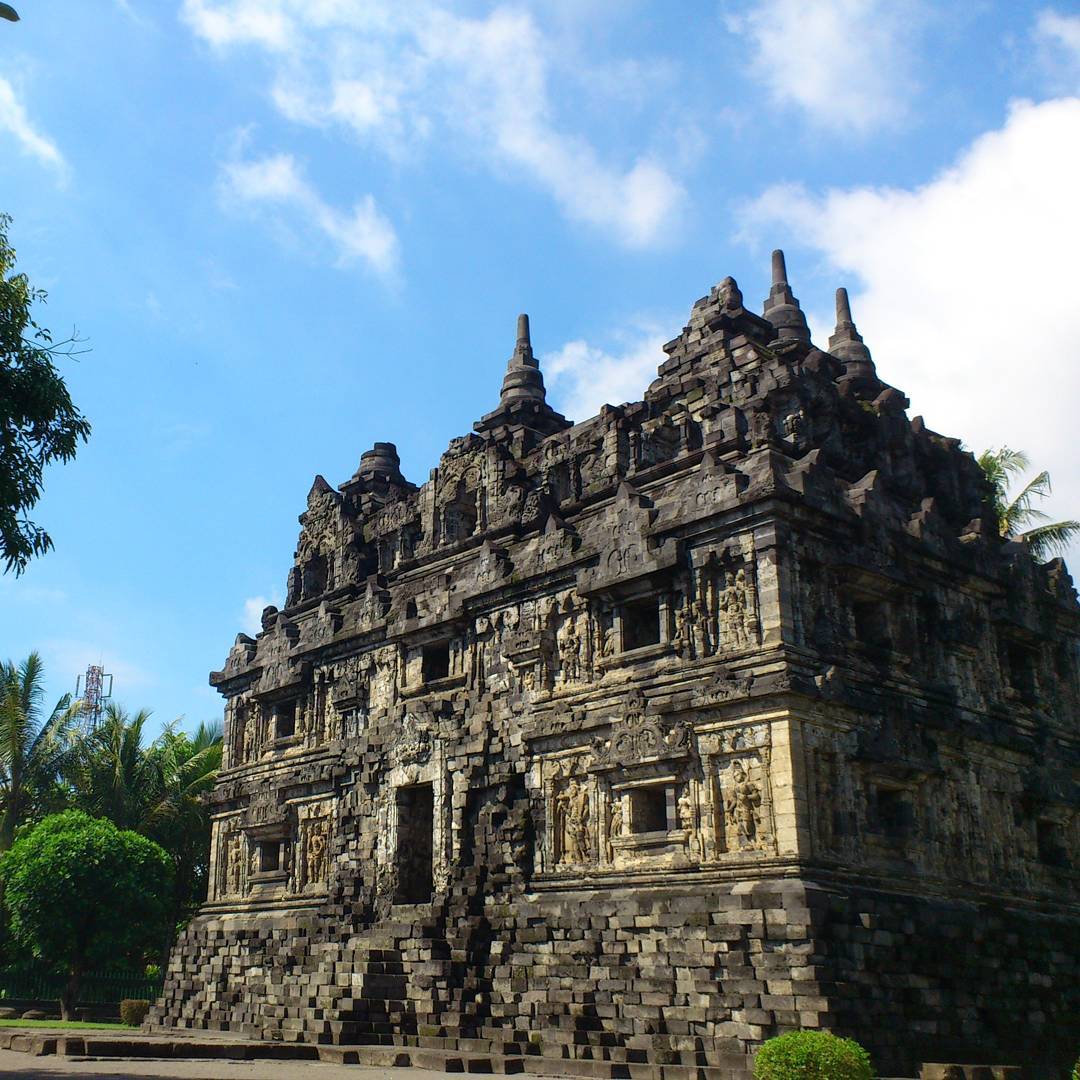
Image credit: @chachamaridhita
Built in the 8th century, Sari Temple is believed to have initially functioned as a Buddhist monastery based on its dorm-like layout.
Sari Temple is only about 3 km away from the last temple on this list, so there’s no need to worry about spending too much time on the road if you’re planning to visit it as well.
Opening hours: 9AM–5PM
Price: Rp. 3,000 (~USD0.21) for local and international visitors
Address: Candisari Hamlet, Bendan, Tirtomartani, Kalasan, Sleman, Special Region of Yogyakarta 55571
How to get there: 32-minute drive from Yogyakarta
8. Kalasan Temple – relief panels coated with a special varnish
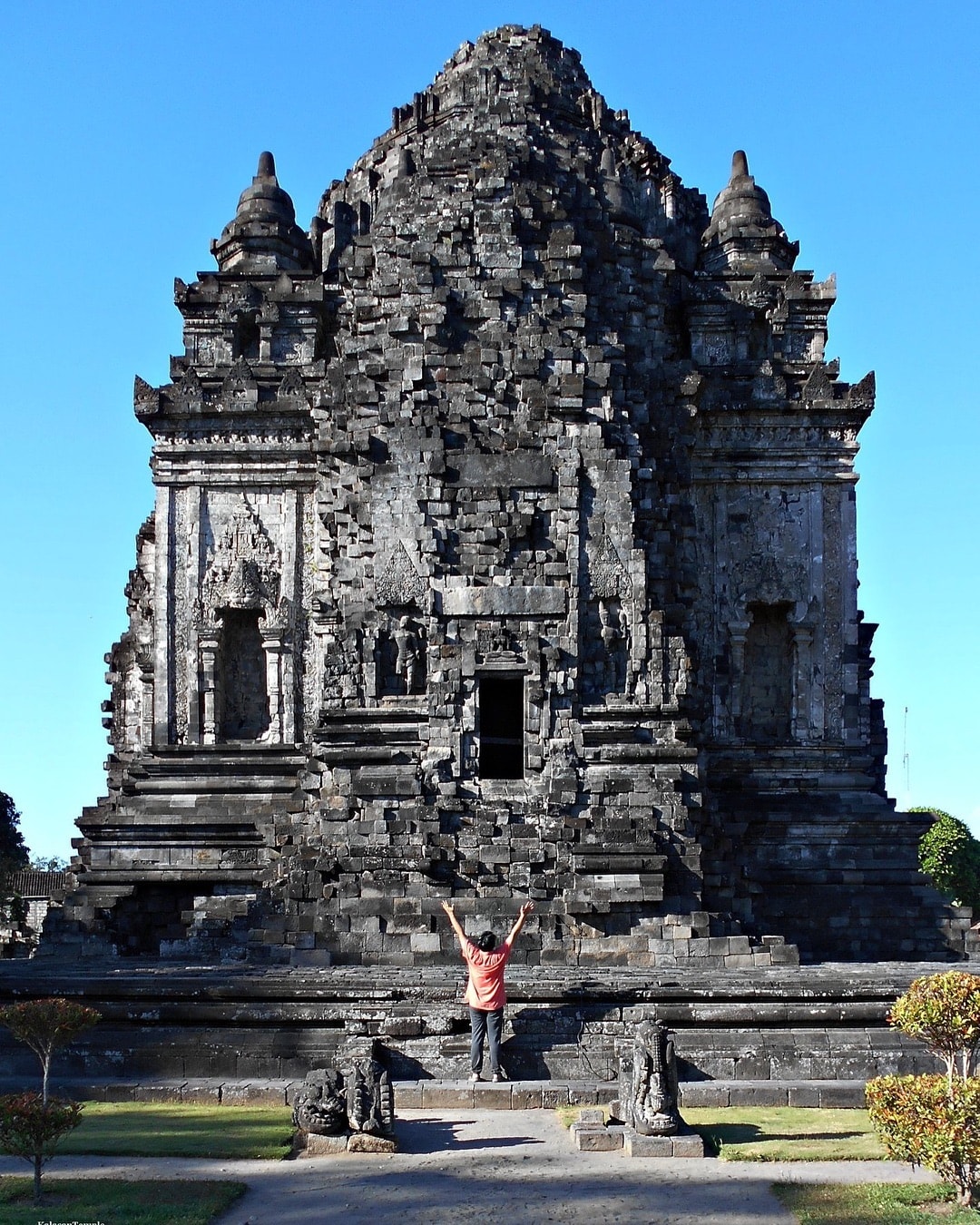
Image credit: @ilyasharjalaksana
The last temple on this list is Kalasan Temple, also known as Kalibening Temple, which is an 8th-century Buddhist temple.
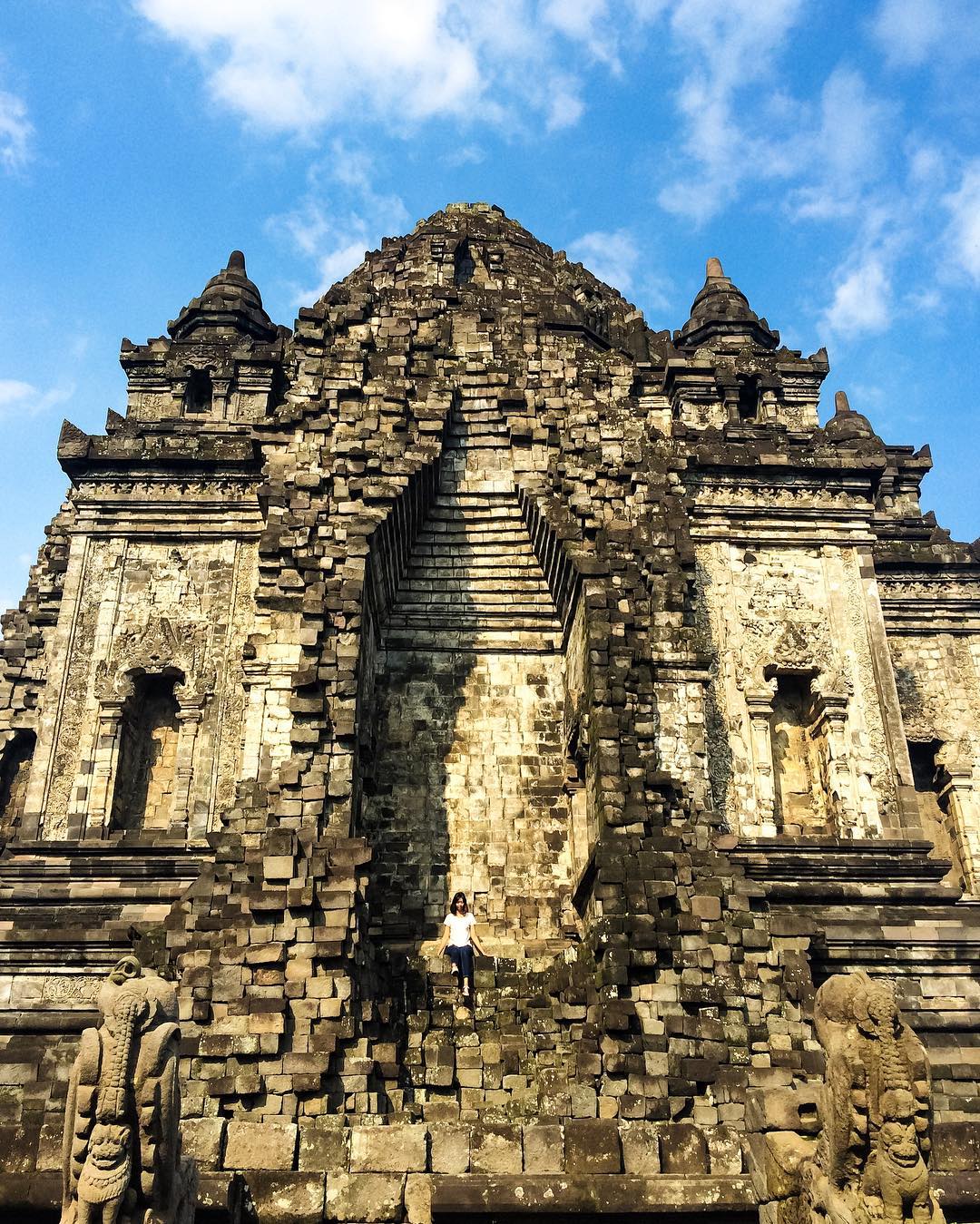
Image credit: @jessicaagnov
Similar to Sari Temple, Kalasan is admired for the fine quality of its ornaments and relief panels. What makes them even more unique is that they’re coated with vajralepa, which is believed to have been made out of egg white and tree sap, for a smooth finish and durability that art enthusiasts will appreciate.
As mentioned earlier, it’s not far from Sari Temple and also only 2 km away from the Prambanan compound.
Opening Hours: 8AM–5PM
Price: Rp. 5,000 (~USD0.35) for local visitors and international visitors
Address: Jalan Raya Yogya, Suryatmajan, Danurejan, Special Region of Yogyakarta 55213
How to get there: 30-minute drive from Yogyakarta
Yogyakarta temples to visit with friends and family
If you’re thinking of learning about culture and history in addition to getting tons of cool photos, be sure to stop by the Yogyakarta temples listed above in future. Not only will you learn more about the background of these magnificent structures, but you’ll also get to have a more meaningful vacation.
More on Yogyakarta:
- Jalan Malioboro Guide – what to eat, things to do, and more
- Sop Wilijan in Yogyakarta, where you can eat in a river
- 8 pine forests in Indonesia
- 8 waterfalls in Indonesia
Cover image adapted from: @ezharzar, @ngeliasalim, and @putrypangestyka
Enjoying The Smart Local Indonesia? Follow us on Facebook, Instagram, and Twitter for more stories like this.






